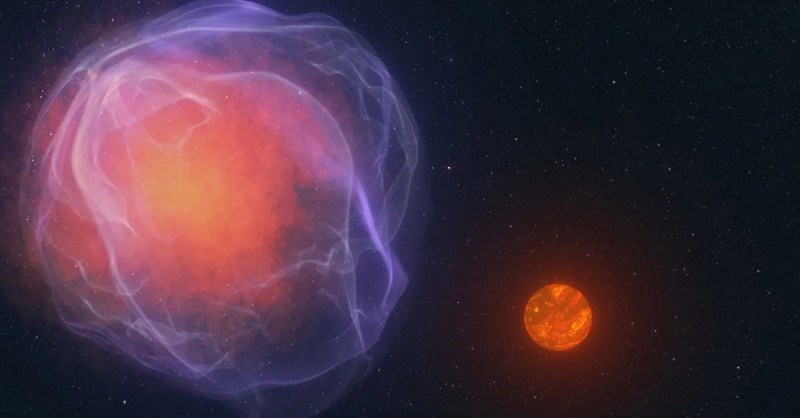When you were five, you probably spotted your best friend running at “a million miles an hour” when they beat everybody at the local athletics meet. You probably haven’t seen anything that fast snice. According to NASA, though, a group of citizen scientists spotted a celestial object doing just that!
The group of citizen scientists were involved in a NASA program called Backyard Worlds: Planet 9. They were working on images from NASA’s Wide-field Infrared Explorer mission. Scanning through stored images, Martin Kabatnik, Thomas P. Bickle, and Dan Caselden identified a curiously speedy object termed CWISE J124909.08+362116.0. There are lots of fast-moving objects out in space, but few quite as fast as this one. It’s quite literally zooming through the Milky Way at about 1 million miles per hour.
It’s unclear exactly what the object is. It appears light enough to be a low-mass star, or potentially a brown dwarf—somewhere in between the classification of gas giant and star. It also has suspiciously low iron and metallic content. The leading hypothesis is that CWISE J1249 might have been ejected from a supernova, or that it got flung around a pair of black holes.
For now, it remains a mystery. It’s a grand discovery that really highlights the value of citizen science. If you’ve been doing your own rigorous scientific work—on NASA’s data or your own—do let us know!
















The paper at https://arxiv.org/pdf/2407.08578 is quite readable. I liked the discussion of how it has an orbit in line with the galactic plane, which might be a clue to its origin.
I’m not so familiar with freedom units, but 1e6 miles/hour seems to be only 0.15% of the speed of light. That is really slow in comparison to e.g. S4714 which moves at about 8% of the speed of light.
So what’s the point here?
There are two easy ways for stars/celestial objects to go plaid (ludicrous speed):
be really close to the center of the galaxy, where orbital speeds can get stupid fast
explode as a supernova and get kicked by the asymmetric jet or the loss of a partner
S4714 is the first type: it’s moving stupid fast because it’s in an elliptical orbit around Sgr A* (galactic SMBH). There’s no weirdness about this, you fall in near an object with the mass of 4 million stars, you’re gonna get moving fast. We’ve also seen the other one, too (RX J0822-4300) – it’s generically called a “pulsar kick.” Again, no serious weirdness about this, we know that those explosions give that kind of a kick.
This guy… is neither of those. It’s not near the Galactic center (hell, it’s practically in our backyard, only ~125 pc away), and it’s a puny subdwarf. So how the heck did it get going that fast?
Keep in mind that with the first type (like S4714) they’re often in elliptical orbits, which means they aren’t always moving that fast. And they certainly wouldn’t end up moving that fast when they’re as far out as the Sun!
“So how the heck did it get going that fast?”
Aliens, it’s always aliens!
Teenage aliens out for a joyride.
Hilariously it’s way too fast for most of the “normal” propulsive stellar engines ideas out there considering it’s a subdwarf, but if you go with the bat$#!+ crazy “Star Tug” idea it’s probably moving too slow given that it’s run out of fuel.
Rimmer, you always say it’s aliens.
Thanks a lot for the detailed explanation
0.001491 c by the way
Intergalactic Domino’s driver?
The “million miles per hour” isn’t even just media speak or rounding: its speed in the Galactic rest frame is 456 +/- 27 km/s, which is ~1.02+/-0.06 million miles/hour.
“haven’t seen anything that fast snice.”
or ever aagin
is tesla rouster still in orbit?
“You probably haven’t seen anything that fast snice. ”
I haven’t seen anyone feed snice either, so I wouldn’t know if they were fasting or what their diet would be.
Neat!
Bah, if it was real citizen science they’d have let us name Fasty Mc FastFace.
If it has speed then it has trajectory, and maybe centre point, NASA my ass.
Say someone that can only think about inertial frame and 2d world.
The Angry Astronaut tonight on his Youtube channel:
“Inexplicably fast moving body in our galaxy – Aliens likely!”
Followed by:
“Secret ship discovered by citizens, NASA hiding the truth”